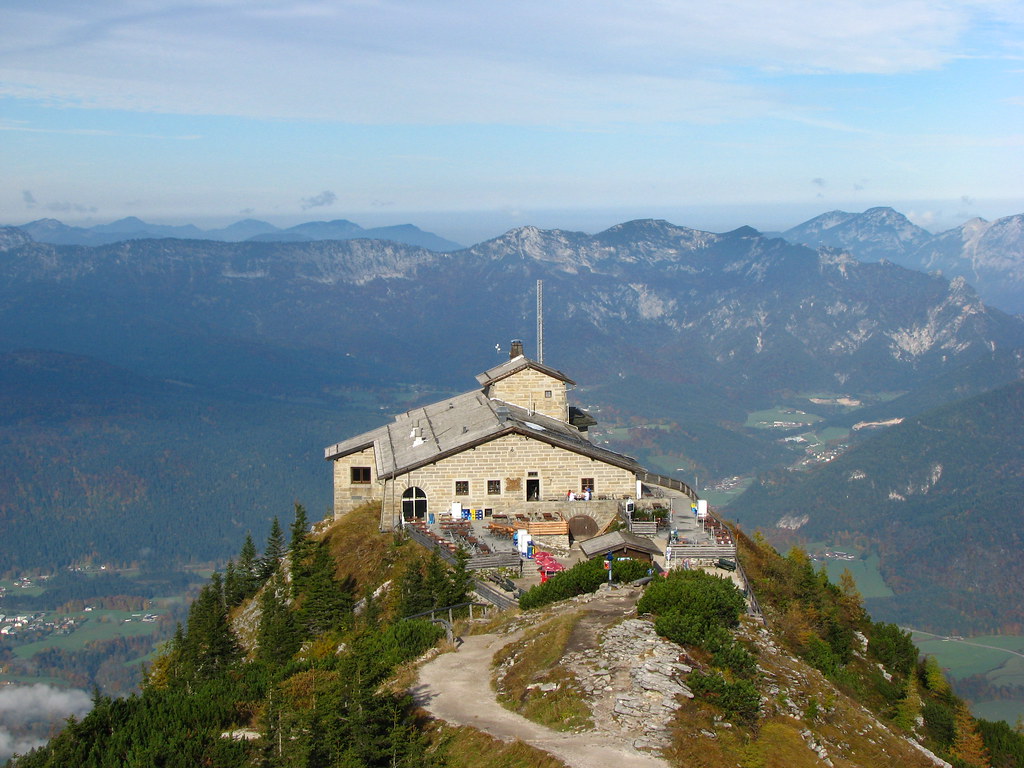In the 1930s, after becoming the German chancellor, Adolf Hitler was looking for the perfect spot to establish an official mountain retreat — a Camp David for his Nazi regime.
If you are looking for a unique and historical destination in Germany, you might want to visit the Kehlsteinhaus, also known as the Eagle’s Nest. This was a Nazi-constructed building that was erected atop the summit of the Kehlstein, a rocky outcrop that rises above Obersalzberg near the southeast German town of Berchtesgaden. It was used exclusively by members of the Nazi Party for government and social meetings, and it was visited on 14 documented instances by Adolf Hitler.
The Eagle’s Nest was a gift from Martin Bormann, Hitler’s private secretary and architect of many buildings on the Obersalzberg. It was commissioned in 1937 and completed in 1938, well ahead of Hitler’s 50th birthday on April 20, 1939, which was considered a deadline for the project. The construction involved over 3,000 workers who worked day and night, winter and summer, for 13 months. Twelve workers died during its construction.
The building is accessible by a 6.5 km (4 mi) road that climbs 800 m (2,600 ft) over five tunnels and one hairpin turn. It cost 30 million ℛℳ to build (about $247 million USD, inflation-adjusted for 2022). From a large car park, a 124 m (407 ft) entry tunnel leads to an ornate elevator that ascends the final 124 m (407 ft) to the building. The elevator is lined with polished brass, Venetian mirrors, and green leather. The building’s main reception room is dominated by a fireplace of red Italian marble presented by Italian dictator Benito Mussolini.
The Eagle’s Nest was intended to be a refuge of last resort for Hitler should he need it. However, he rarely used it because he suffered from vertigo and acrophobia. He preferred his Berghof residence on the lower slopes of Obersalzberg. The Eagle’s Nest was mostly used by other Nazi officials such as Hermann Göring, Heinrich Himmler, Albert Speer, Joachim von Ribbentrop, and Eva Braun. It was also used for diplomatic engagements such as receiving departing French ambassador André François-Poncet on October 18th, 1938.
The Eagle’s Nest survived World War II largely intact because it was not a strategic target for Allied bombing raids. It was captured by American troops on May 4th, 1945 without any resistance. They found wine bottles with Hitler’s initials on them as well as some personal belongings of Eva Braun. The Americans also chipped off pieces of Mussolini’s fireplace as souvenirs.
Today, the Eagle’s Nest is open seasonally as a restaurant, beer garden, and tourist site. It offers spectacular views of the surrounding Alps and valleys. It is also a reminder of the dark history of Nazi Germany and its atrocities. Many visitors find it eerie to walk in the footsteps of some of history’s most notorious figures. If you decide to visit, you should be respectful of its past and mindful of its significance.



